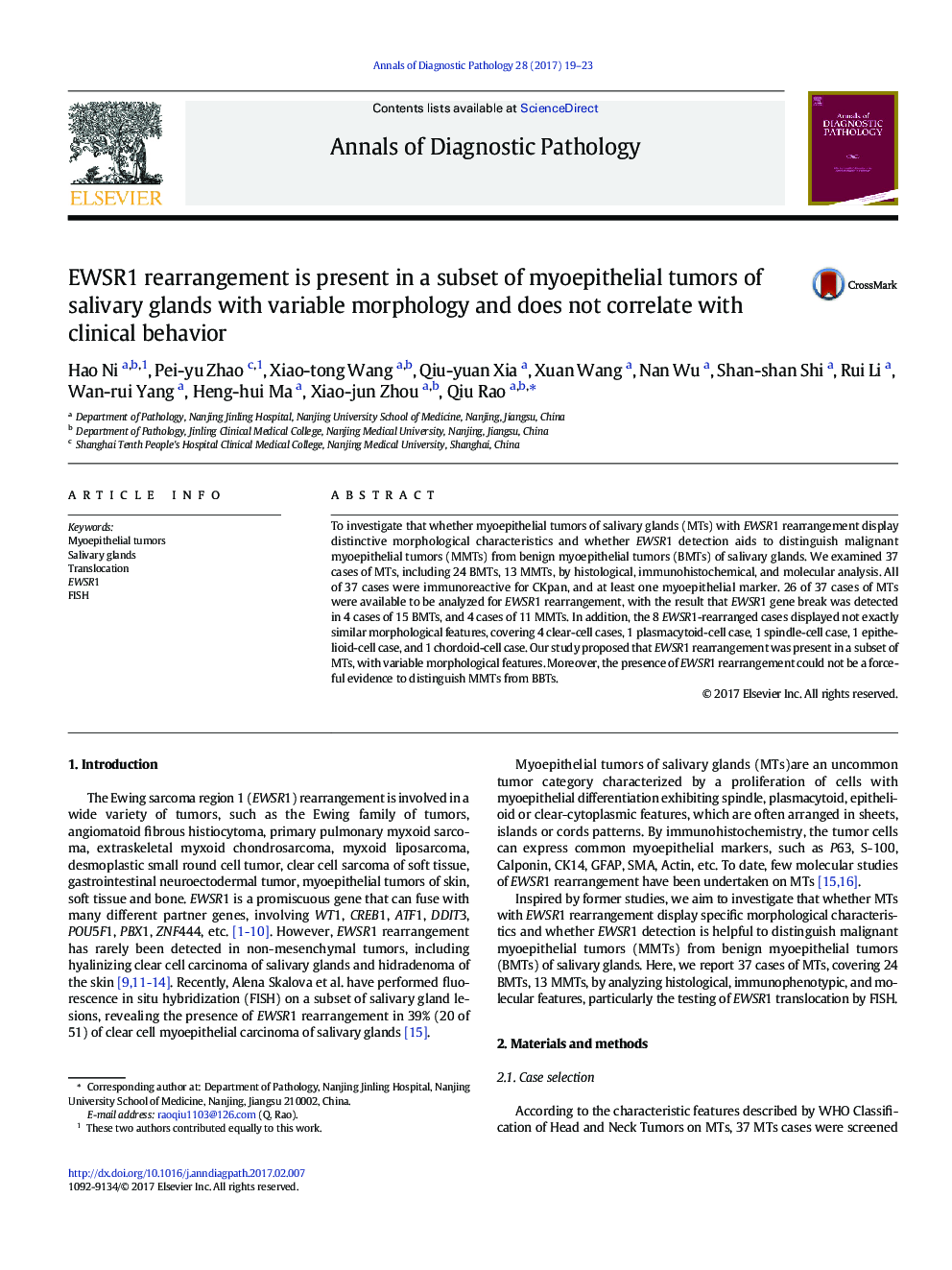| Article ID | Journal | Published Year | Pages | File Type |
|---|---|---|---|---|
| 5715923 | Annals of Diagnostic Pathology | 2017 | 5 Pages |
â¢EWSR1 rearrangement is not only present in clear cell MMTs.â¢EWSR1 rearrangement exists in both MMTs and BMTs, showing various morphologies.â¢EWSR1 rearrangement cannot be a forceful evidence to distinguish MMTs from BMTs.
To investigate that whether myoepithelial tumors of salivary glands (MTs) with EWSR1 rearrangement display distinctive morphological characteristics and whether EWSR1 detection aids to distinguish malignant myoepithelial tumors (MMTs) from benign myoepithelial tumors (BMTs) of salivary glands. We examined 37 cases of MTs, including 24 BMTs, 13 MMTs, by histological, immunohistochemical, and molecular analysis. All of 37 cases were immunoreactive for CKpan, and at least one myoepithelial marker. 26 of 37 cases of MTs were available to be analyzed for EWSR1 rearrangement, with the result that EWSR1 gene break was detected in 4 cases of 15 BMTs, and 4 cases of 11 MMTs. In addition, the 8 EWSR1-rearranged cases displayed not exactly similar morphological features, covering 4 clear-cell cases, 1 plasmacytoid-cell case, 1 spindle-cell case, 1 epithelioid-cell case, and 1 chordoid-cell case. Our study proposed that EWSR1 rearrangement was present in a subset of MTs, with variable morphological features. Moreover, the presence of EWSR1 rearrangement could not be a forceful evidence to distinguish MMTs from BBTs.
